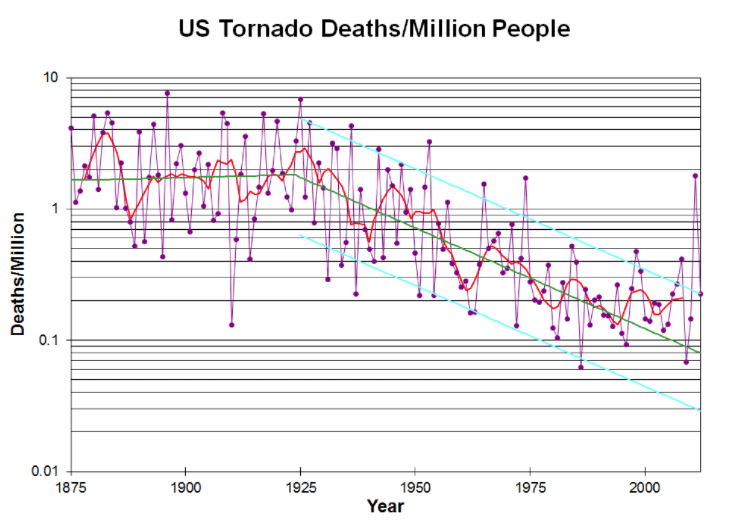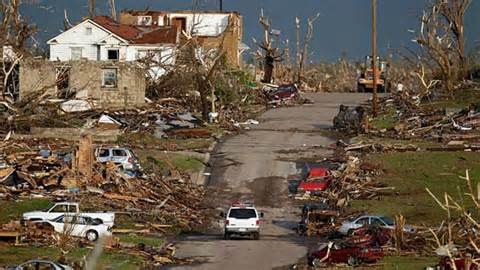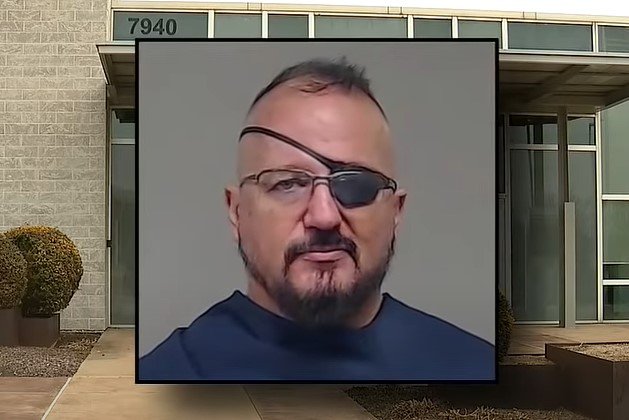Death Toll Reaches 100, and America’s Leftists Love It and Push More Fake News on Tornadoes

Guest post by Bill Hennessey
Tornadoes in Missouri, Illinois, Arkansas, Tennessee, and, especially, Kentucky caused massive damage and over 100 deaths. In Kentucky, more than 100 are feared dead in the collapse of a single candle factory where rescue operations continue around the clock.
Yet America’s leftists welcome this news with glee. Why? Two reasons:
- Leftists are evil.
- Ignorant leftists think deadly tornadoes are a result of climate change.
TRENDING: EVIL: SNL ‘Jokes’ About Gang F***ing Roger Stone’s 75-Year-Old Wife Who Has Cancer (VIDEO)
Remember, leftists believe all events, good or bad, are the result of their favorite bogeyman of the moment. They lack critical thinking skills, bigly. Here are some examples of their stupidity and malice:
We should do all we can to help our Kentucky neighbors. God be with them — they are hurting. But do not for one second forget that @RandPaul has voted against helping most Americans most times they’re in need. https://t.co/JkZQOZ4HuG
— Rep. Eric Swalwell (@RepSwalwell) December 12, 2021
We know @RandPaul is a heartless hypocrite. The people in Kentucky deserve the relief regardless of their buffoonish leadership, but if the Dems don’t use this against him and his party in the future, it is a missed opportunity. https://t.co/G61GrsNfFq
— Jemele Hill (@jemelehill) December 11, 2021
And, no disaster would be complete without Hollywood’s lowest-IQ weighing in to prove his imbecility:
This is what #ClimateCatastrophe looks like. It’s only going to get worse from here. Now is time to fight for our suffering and despairing youth. https://t.co/GmSvAmawRt
— Mark Ruffalo (@MarkRuffalo) December 11, 2021
Now that you know how evil leftists are (and assume all leftists are this ignorant), let’s look at the reality of tornado deaths in the United States.
According to the National Oceanographic and Atmospheric Administration (NOAA), deaths by tornado per million people have dropped dramatically over the years.
The latest data available are from 2013, but here’s the chart:

Look at the green line, which tracks mean deaths per year. It was steady from 1875 to 1925. Then it descends steadily to 2013.
Leftists will say that’s become of early warning which allows people to seek cover, and they’d be partly right. But they’re not considering the fact that, throughout this period, populations have become more concentrated. And one F5 tornado in a densely populated area will cause more fatalities than the same tornado in a sparsely populated area.
Now, we’ll look at the number of tornadoes. Sadly, data on annual tornadoes in the US only goes back to 1953. And historical data on the number of tornadoes is actually meaningless earlier than about 1970.

Historical tornado counts are useless because, until about the 1970s, only tornadoes experienced by a weather reporter were counted. If a tornado happened and no one saw and reported it, there’s no record of it. Coast-to-coast weather radar didn’t really arrive until the 1970s. Even today, there are large parts of the US outside the scope of weather radar but filled in with satellite data.
Throughout the period shown in the graph above, our ability to spot and count tornadoes grew steadily until the 1990s when ubiquitous coverage was finally achieved.
Which explains why the plot line turns downward in about 2009. It’s impossible to say whether the number of tornadoes increased from 1953 to 2009 because our coverage was increasing throughout this period. That’s why tornado deaths is a better measure of the frequency of tornadoes than guestimates based on partial historical data.
Considering that the numbers of tornadoes since we reached complete coverage have been flat or decreasing, it’s safe to assume that the moving 10-year average of tornadoes since 1875 has been pretty flat.
But all of this math, science, and history is beyond the capabilities of leftists who, like amoebae, simply respond to stimuli with ignorance-based judgments. The left’s rejection of history, seen in their fetish for destroying all reference to anything that happened before they reached puberty, renders America’s left (and most of the population under the age of 40) incapable of evaluating any situation against historical norms. This is why the younger generations (and Pope Francis) negatively judge everyone who lived before them rather than judging themselves through the eyes of their ancestors.
Here’s an example. My great grandfather was a country doctor who practiced medicine around Lynn and Chamois, Missouri from about 1880 until 1910 when he moved his family to St. Louis. As a country doctor, Dr. William T. Mahon worked with the tools he had available.
In the 1880s, a boy in his area was kicked by a mule, crushing his skull. Doctor Mahon removed the bone fragments, relieving cranial pressure, but some of the fragments were too small to piece back together. He needed a substance to protect the brain.
His father was a doctor, too, but also a blacksmith. (Doctoring didn’t always pay the bills in Lynn, Missouri, in 1880. Doctors needed a second source of income.) The two Doctors Mahon could have fashioned an iron piece, but it would have been too heavy. So William T. Mahon settled for the best available alternative: lead.
When I told this story to a modern doctor, he became instantly angry at my great grandfather. “He might as well have let the kid die,” he said. “Putting lead inside someone’s body is poisoning. Your grandfather should never have had a medical license.”
This conversation took place about 115 years after my great grandfather performed that life-saving cranioplasty with lead, the only reasonable substance available. I don’t know how the boy faired in the long run, but he lived at least for a time and with some degree of protection for his brain.
In 1880, we had no idea that lead caused problems in the human body. The first evidence of lead poisoning occurred in the 1920s and only after the invention of tetraethyl lead used in gasoline. As late as 1958, the Surgeon General believed lead was safe1:
[T]he Surgeon General concluded in 1958 that a loosening of the voluntary standard posed no threat to the health of the average American: “During the past 11 years, during which the greatest expansion of tetraethyl lead has occurred, there has been no sign that the average individual in the U.S. has sustained any measurable increase in the concentration of lead in his blood or in the daily output of lead in his urine.”
It wasn’t until 1973 the EPA ordered a phase-out of leaded gasoline.
It’s true that there were suspicions of lead’s toxicity going back to ancient Greece, but the use of lead only increased for 6,000 years.
The first published report on childhood lead poisoning came in 1892 but was viciously attacked by the “authoritative” medical community of the day.2 (Some things never change.)
Doctor Mahon simply did not know that his lead cranioplasty could cause his patient damage down the road. But that didn’t stop a 21st century physician from harshly judging my great grandfather. People of the 21st century tend to judge all previous generations by what we know now, not what was known and generally accepted then.
This is why I will forgive Swalwell and Mark Ruffalo and the others who mock those who are suffering from Friday’s tornadoes. Having been educated in the 21st century, these young leftists cannot possibly know that tornadoes existed even before they were born.






